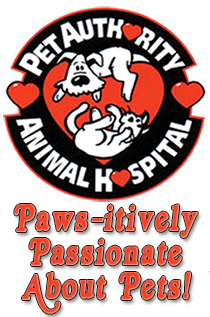Not only is 2019 the Year of the Pig, March 1st marks Pig Day!
Mini-pigs – also known as teacup, micro, and pocket pigs – are gaining popularity as family pets. As piglets, they are tempting; squealing with delight as they root around to explore; snorting quietly while they snooze in bed; and engaging in “the zoomies,” random sudden outbursts of energy! Entertaining and heartwarming! Who could resist?! But it is important to be realistic about their growth, daily needs, cost, and compatibility with other pets.
Mini-pigs grow, and grow, and… grow some more! Even though they may only weigh 1 – 2 lbs at birth, they can tip the scales at 150 lbs (or more) when fully grown! Keep in mind that a mini-pig is built differently from a dog – a 100 lb dog and 100 lb mini-pig will not be the same size. A 100 lb pig may only be the height of a 35 lb dog.
It is difficult to predict just how quickly and how large a mini-pig will grow. A good way to judge how big a mini-pig will be is to look at its parents (as long they are over 2 years of age). A pig will reach adult height and weight by age 4 or 5, but by age 2, will have gained the bulk of its weight and height.
Here are some more points to consider before adopting a mini-pig:
- Be aware of the zoning restrictions in your city. Some municipalities do not allow pet pigs – even mini-pigs.
- Veterinary care is just as important for a mini-pig as it is for a cat or dog. It is important to find a veterinarian who is experienced in caring for mini-pigs and budget for your mini-pig’s veterinary care, including annual check-ups, vaccinations, de-worming, tusk and hoof trims, spay/neuter, and any health problems that may arise.
- Dogs, cats, and mini-pigs can live happily together; however, because pigs run when startled, dogs may be provoked to give chase as a predatory response. Because of this, it is important to never leave mini-pigs alone with even the friendliest of dogs.
- Pigs are highly motivated by food, and because they are highly intelligent, they can learn to get into cabinets, garbage and the refrigerator. “Pig-proofing” your home is a requirement!
- Mini-pigs require a nutritionally balanced diet that includes both plant and animal protein. Pelleted pig chow, supplemented with fresh vegetables and hay, should be offered to your mini-pig 2-3 times a day. Be sure you can buy pig chow in your community.
- While pigs can happily live indoors, they need time outside to “root” and chew on grass and exercise. This rooting behavior can quickly destroy a yard and landscaping.
- Mini-pigs live a long time. The average life span is 15-18 years, but they have been known to live as long as 21 years of age.
Adopting a mini-pig is a long-term commitment that should be taken seriously. The rehoming of mini-pigs can be difficult, and rescues and hobby farms often have no room to take them in. It’s easy to fall in love with a piglet, but don’t be fooled by the names mini, teacup, micro, or pocket. A mini-pig will grow up and need as much care as any other pet – and maybe even more.
